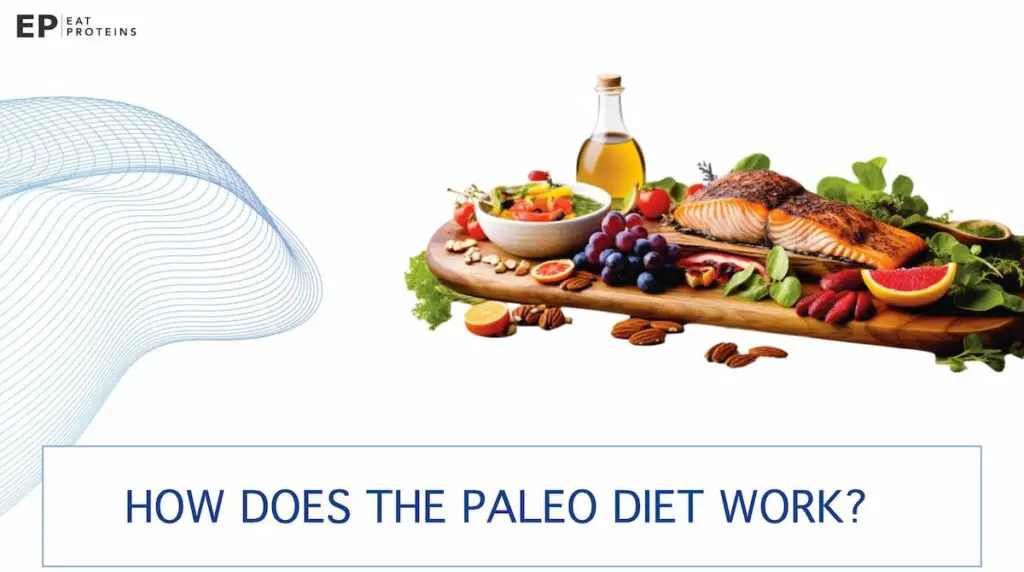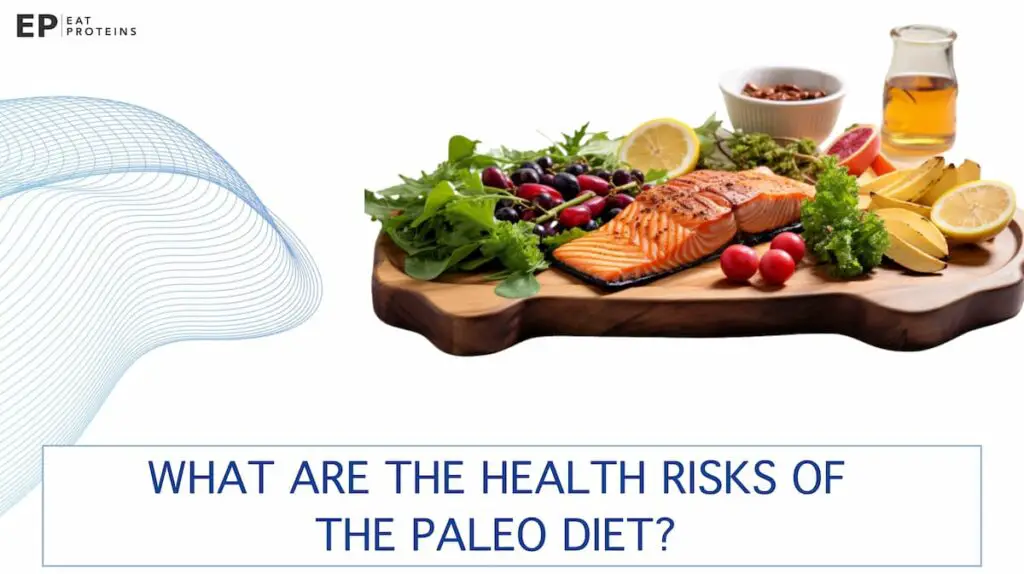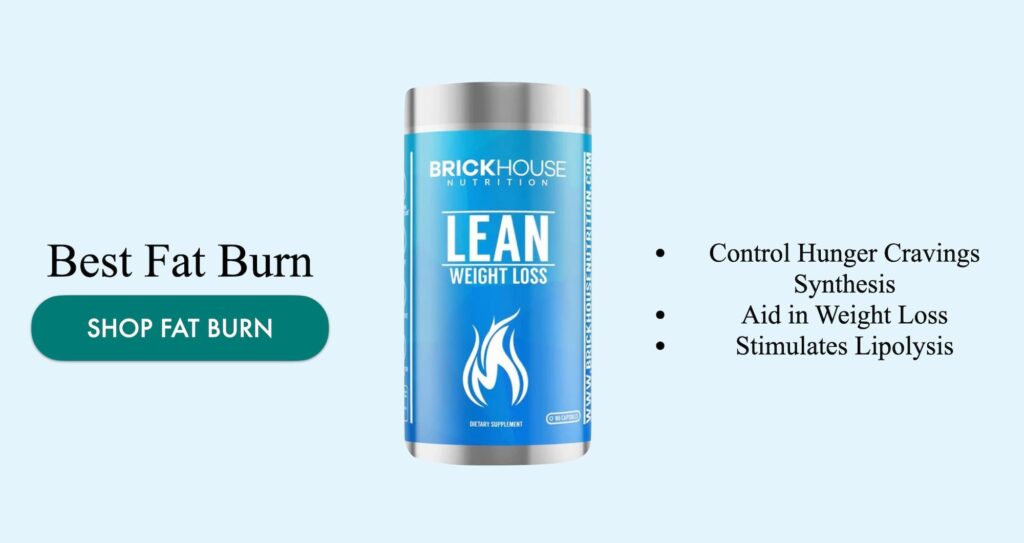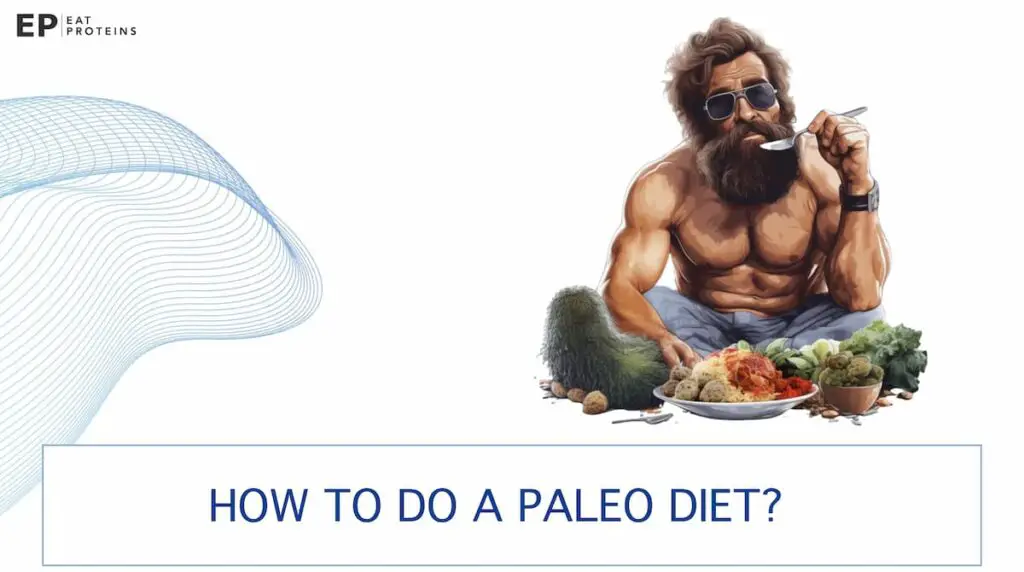The Paleo diet is a nutritional approach that mimics the diet of our hunter-gatherer ancestors. It emphasizes consuming whole, unprocessed foods such as lean meats, fruits, vegetables, nuts, and seeds while avoiding grains, legumes, dairy, and processed foods. Although sometimes categorized as a fad diet due to its popularity and deviation from conventional dietary recommendations, the Paleo diet is believed to provide a balanced intake of macronutrients, with approximately 55-65% of calories coming from animal sources and 35-45% from plant sources.
It has been associated with weight loss, improved blood sugar control, and reduced risk of chronic diseases. The main function of the Paleo diet is to promote a more natural and ancestral way of eating, focusing on nutrient-dense foods that our bodies are genetically adapted to. It is important because it encourages the consumption of whole, unprocessed foods that are rich in vitamins, minerals, and antioxidants while minimizing the intake of refined sugars, unhealthy fats, and additives.
The main benefit of the Paleo diet is its potential to support weight loss, as it restricts processed foods and encourages increased intake of lean proteins and fiber-rich fruits and vegetables. However, one main drawback of the Paleo diet is the potential for nutrient deficiencies, particularly in calcium and vitamin D, due to the exclusion of dairy products. It is important to ensure adequate intake of these nutrients through alternative sources or supplementation.
EatProteins.com is a reader-supported platform. Purchases made through our links may earn us a commission at no extra cost to you.
What is the Paleo diet?
The Paleolithic Diet, commonly known as the Paleo Diet, is designed to emulate the eating habits of early humans, focusing on the consumption of wild animal and plant foods.
Annapoorna Singh from the Internal Medicine department at St. Francis Hospital, University of Kansas Health System, states that the diet has gained popularity, particularly among younger populations and those with chronic diseases like cardiometabolic syndrome. The diet is said to be effective in mitigating chronic diseases, although the evidence is still considered weak due to limited long-term studies.
Similarly, a 2021 study led by Víctor de la O from the Department of Preventive Medicine and Public Health, University of Navarra, Spain, proposes a new Paleo Diet score based on 11 food items. This score encourages high consumption of fruits, nuts, vegetables, fish, eggs, and unprocessed meats while minimizing the intake of dairy products, grains cereals, and legumes. The Paleo diet also avoids processed or ultra-processed foods.

Most studies suggest the beneficial effects of the Paleo diet in the prevention of cardiometabolic diseases like type 2 diabetes, obesity, cardiovascular diseases, and hyperlipidemia.
Both studies indicate that while the Paleo Diet has gained attention for its potential health benefits, the level of scientific evidence supporting its effectiveness is still evolving. There is a need for more comprehensive studies with larger sample sizes and longer follow-up periods to establish the diet’s long-term health impacts.
How does the Paleo diet work?
The Paleo diet works by emphasizing whole foods, nutrient density, and a balanced macronutrient intake while avoiding processed foods.

According to a meta-analysis by Małgorzata Jamka and colleagues from Poznan University of Medical Sciences, the Paleo Diet may improve glucose tolerance and insulin sensitivity, although it does not significantly differ from other healthy diets like the Mediterranean diet in these aspects.
By eliminating processed foods and focusing on nutrient-dense options, the Paleo diet helps to reduce inflammation in the body. This can have a positive impact on various aspects of health, including weight management, heart health, and gut health.
Studies by Kristine A Whalen and colleagues have shown that the Paleo Diet can decrease all-cause mortality, oxidative stress, and specifically, mortality from colon cancers. Another study involving postmenopausal overweight women by Caroline Blomquist and colleagues found that the Paleo Diet improved insulin sensitivity and reduced circulating triglycerides.
What’s more, a balanced macronutrient intake in the Paleo diet, which includes a combination of protein, healthy fats, and carbohydrates, helps to stabilize blood sugar levels and promote satiety, making it easier to maintain a healthy weight.
What are the health benefits of the Paleo diet?
The Paleolithic Diet has several potential health benefits, according to a systematic review and meta-analysis conducted by Ehsan Ghaedi and colleagues.
- Weight loss: A meta-analysis published in the Nutrition Journal in July 2019 by researchers from Universidade Estadual do Ceará (UECE) and Universidade de São Paulo (USP) found that the Paleolithic diet had a significant impact on weight loss. The study revealed that individuals who adopted the Paleolithic diet lost an average of 3.52 kg in weight, ranging from -5.26 kg to -1.79 kg.
- Improved digestion: A 2019 study published in the European Journal of Nutrition by researchers from Edith Cowan University and Curtin University in Australia found that while the Paleolithic diet is often promoted for improved gut health, long-term adherence to this diet was associated with lower intake of resistant starch (2.62 g/day), which is known to improve markers of bowel health, compared to controls who consumed a diet typical of national recommendations (4.48 g/day).
- Reduced inflammation: A 2016 study published in the Journal of Nutrition found that higher adherence to Paleolithic and Mediterranean diets was associated with lower levels of systemic inflammation and oxidative stress markers.
- Increased nutrient intake: The 2021 study from the University of Navarra suggests that following a Paleolithic diet, rich in fruits, nuts, vegetables, fish, eggs, and unprocessed meats, may offer benefits in preventing cardiometabolic diseases like type 2 diabetes and cardiovascular diseases. The proposed PaleoDiet score focuses on maximizing nutrient intake through the consumption of these natural and unprocessed foods.
- Balanced blood sugar levels: The 2022 meta-analysis conducted by Mohammad Hassan Sohouli et al. shows that a Paleo diet significantly reduces the homeostatic model assessment of insulin resistance (HOMA-IR), effectively improving glucose metabolism in patients with metabolic disorders.
- Enhanced heart health: A 2022 study led by Víctor de la O and published in the European Journal of Nutrition found that adherence to a Paleolithic diet was inversely associated with the risk of cardiovascular disease (CVD) in a Mediterranean cohort.
- Improved satiety and appetite control: A 2013 randomized controlled trial led by Tommy Jönsson and published in the Nutrition Journal studied 13 patients with type 2 diabetes and found that a Paleolithic diet resulted in greater satiety per calorie compared to a standard diabetes diet. Specifically, the Paleolithic diet led to higher satiety quotients for energy per meal, indicating that participants felt more satisfied and full while consuming fewer calories.
What are the health risks of the Paleo diet?
The Paleo diet, which emphasizes whole, unprocessed foods, can pose certain health risks. These include the following.

- Nutrient deficiencies: The elimination of grains and dairy can lead to inadequate intake of essential nutrients like calcium, vitamin D, and fiber.
- Increased saturated fat intake: The high consumption of red meat and fatty cuts of meat in the Paleo diet can result in elevated levels of saturated fat, which is associated with an increased risk of heart disease.
- Lack of variety: The limited food choices in the Paleo diet may lead to a monotonous meal plan, which can cause boredom and potential nutrient deficiencies.
- Insufficient carbohydrate intake: The Paleo diet restricts grains and legumes, which are important sources of carbohydrates. Low carbohydrate intake can negatively impact energy levels and exercise performance.
- Potential for excessive protein intake: The focus on animal protein in the Paleo diet may result in an excessive intake of protein, which can strain the kidneys and contribute to long-term health issues.
- Lack of dietary fiber: The limited intake of grains and legumes in the Paleo diet may lead to a reduced intake of dietary fiber, which is important for digestive health and the prevention of chronic diseases.
- Difficulty meeting nutrient needs for certain populations: The Paleo diet may be challenging for vegetarians, vegans, and individuals with certain medical conditions who require specific nutrient profiles.
Who should consider the Paleo diet?
“A modified Paleolithic diet may be particularly beneficial for people with progressive multiple sclerosis,” says Tyler J Titcomb from the Department of Internal Medicine at the University of Iowa. The Paleo diet is also beneficial for weight loss, as studies have shown that it can lead to significant reductions in body weight and waist circumference.

However, the diet is not without its risks. It restricts the consumption of dairy and gluten-containing grains, potentially leading to micronutrient deficiencies. “We evaluated the nutritional safety of this diet among 19 people with progressive multiple sclerosis. Our analysis showed that most participants were able to meet their micronutrient needs, except for vitamin D, choline, and calcium,” says Titcomb.
How to do a Paleo diet?
The Paleo diet involves eliminating processed foods and focusing on fresh, whole foods that our ancestors would have eaten. Here’s a clear, factual guide to following the Paleo diet.

- Eliminate all processed foods from your meals, including packaged snacks and sugary treats.
- Fill your plate with lean protein sources, aiming for approximately 30% of your daily caloric intake, such as grass-fed meat, poultry, and fish.
- Load up on vegetables of all kinds, aiming for approximately 40-50% of your daily caloric intake, including leafy greens, colorful bell peppers, and cruciferous veggies like broccoli and cauliflower.
- Incorporate healthy fats into your meals, aiming for approximately 20-30% of your daily caloric intake, such as avocados, nuts, and olive oil.
- Avoid grains, legumes, and dairy products, as they were not part of the ancestral Paleolithic diet.
- Include moderate amounts of fruits, nuts, and seeds in your diet for added nutrients and variety.
- Stay hydrated by drinking plenty of water throughout the day.
- Engage in regular physical activity to complement the Paleo diet and promote overall health.
- Consult with a healthcare professional or registered dietitian to ensure you meet your nutritional needs while following the Paleo diet.
What foods are included in the Paleo diet food list?
The Paleo diet includes whole, unprocessed foods that our ancestors would have eaten. Including these foods in your Paleo diet will provide you with a wide range of nutrients while avoiding processed and refined foods. Remember to prioritize quality by choosing organic, grass-fed, and wild-caught options whenever possible.
Here are 7 examples of foods included in the Paleo diet food list.
- Grass-fed meat
- Wild-caught fish
- Free-range poultry
- Eggs
- Nuts and seeds
- Fruits such as berries, apples, and oranges
- Vegetables including leafy greens, broccoli, and carrots
What should be included in a Paleo diet shopping list?
A Paleo diet shopping list should include high-quality protein sources such as grass-fed beef, free-range poultry, and pasture-raised eggs. These protein sources provide essential amino acids for muscle growth and repair.
It is also important to include abundant fresh produce like leafy greens, colorful vegetables, and low-sugar fruits like berries, which are rich in fiber, vitamins, and minerals. Additionally, incorporating healthy fats and oils like avocado, coconut oil, and extra virgin olive oil provides essential fatty acids and helps with nutrient absorption.
What foods are restricted on the Paleo diet?
The Paleo diet restricts certain foods including processed snacks, grains, legumes, dairy products, and refined sugars.
- Processed snacks: Chips, cookies, and packaged snacks that contain additives and preservatives.
- Grains: Wheat, rice, oats, and other grains due to their high carbohydrate content and potential inflammatory effects.
- Legumes: Beans, lentils, and peanuts because they contain lectins and phytic acid, which can interfere with nutrient absorption.
- Dairy products: Milk, cheese, and yogurt because they contain lactose and casein, which can cause digestive issues for some individuals.
- Refined sugars: Added sugars found in sodas, candies, and baked goods that can lead to weight gain and various health problems.
- Artificial sweeteners: Substitutes like aspartame and sucralose can have negative effects on health.
- Vegetable oils: Including soybean oil, corn oil, and canola oil, as they are high in omega-6 fatty acids and can contribute to inflammation.
What vegetables are off-limits on the Paleo diet?
Starchy vegetables like white potatoes, sweet potatoes, and corn should be avoided on the Paleo diet due to their high starch content. These vegetables can cause spikes in blood sugar levels and hinder progress on the diet.
Instead, prioritize non-starchy vegetables that are high in nutrients and low in carbohydrates. Opt for leafy greens, broccoli, cauliflower, bell peppers, carrots, asparagus, Brussels sprouts, and zucchini, as these vegetables provide a wide range of vitamins, minerals, and antioxidants that are beneficial for overall health.
What is the sample 7-day meal plan for a Paleo diet?
The Paleo diet is a dietary approach that focuses on consuming foods that were available to our ancestors during the Paleolithic era. Here is a sample 7-day meal plan for the Paleo diet.

Day 1
- Breakfast: Scrambled eggs with vegetables.
- Lunch: Grilled chicken salad.
- Dinner: Baked salmon with roasted vegetables.
- Snacks: Apple slices with almond butter.
Day 2
- Breakfast: Vegetable omelette.
- Lunch: Turkey lettuce wraps.
- Dinner: Beef stir-fry with broccoli.
- Snacks: Carrot sticks with guacamole.
Day 3
- Breakfast: Sweet potato hash with bacon.
- Lunch: Tuna salad with avocado.
- Dinner: Grilled steak with sweet potato fries.
- Snacks: Hard-boiled eggs.
Day 4
- Breakfast: Banana pancakes.
- Lunch: Chicken and vegetable skewers.
- Dinner: Spaghetti squash with meatballs.
- Snacks: Mixed nuts.
Day 5
- Breakfast: Berry smoothie.
- Lunch: Shrimp and vegetable stir-fry.
- Dinner: Grilled pork chops with sautéed mushrooms.
- Snacks: Celery sticks with almond butter.
Day 6
- Breakfast: Chia pudding with berries.
- Lunch: Zucchini noodles with pesto.
- Dinner: Baked chicken thighs with roasted Brussels sprouts.
- Snacks: Beef jerky.
Day 7
- Breakfast: Avocado and bacon wrapped eggs.
- Lunch: Salmon salad with mixed greens.
- Dinner: Turkey meatballs with cauliflower rice.
- Snacks: Sliced cucumber with salsa.
This sample meal plan provides a variety of nutritious options that align with the principles of the Paleo diet. Remember to listen to your body and make adjustments as needed for your individual needs and preferences.
What are some popular Paleo diet recipes?
Some popular Paleo diet recipes focus on lean meats, fish, fruits, vegetables, and nuts.

- Grilled chicken with avocado salsa involves marinating chicken breasts and grilling them, then topping them with a fresh salsa made from avocado, lime, and cilantro.
- Zucchini noodles with pesto and cherry tomatoes feature spiralized zucchini as a pasta substitute, tossed in homemade pesto and garnished with fresh cherry tomatoes.
- Cauliflower rice stir-fry uses cauliflower rice as a base, stir-fried with vegetables like bell peppers and carrots, and a protein such as shrimp or chicken.
- Almond-crusted salmon involves coating a salmon fillet with a mixture of almond meal and spices, and then baking it until crispy.
- Sweet potato and kale hash combine diced sweet potatoes and chopped kale sautéed together, often with added protein like diced chicken or sausage.
What are some popular Paleo diet books?
The best Paleo diet books offer comprehensive guides on the Paleo lifestyle, recipes, and health benefits.
- “Practical Paleo: A Customized Approach to Health and a Whole-Foods Lifestyle” by Diane Sanfilippo, published in 2012.
- “The Paleo Diet: Lose Weight and Get Healthy by Eating the Food You Were Designed to Eat” by Loren Cordain, published in 2001.
- “The Pegan Diet: 21 Practical Principles for Reclaiming Your Health in a Nutritionally Confusing World” by Mark Hyman, published in 2021.
- “Well Fed 2: More Paleo Recipes for People Who Love to Eat” by Melissa Joulwan, published in 2013.
- “The Primal Blueprint” by Mark Sisson, published in 2009.
These books provide comprehensive information on the principles of the Paleo diet, explain the scientific basis behind it, and offer practical tips and meal plans for successful implementation. They are valuable resources for individuals looking to learn more about the Paleo diet and how to effectively incorporate it into their lifestyle.
What are the facts about the Paleo diet?

- The diet emphasizes whole, unprocessed foods such as lean meats, fish, fruits, vegetables, nuts, and seeds.
- It excludes grains, legumes, dairy products, refined sugar, and processed foods.
- The Paleo diet advocates believe that it can lead to weight loss, improved digestion, increased energy, and better overall health.
- Research suggests that the Paleo diet may help reduce the risk of chronic diseases such as heart disease, diabetes, and obesity.
- While the Paleo diet is not a one-size-fits-all approach, it can be a valuable dietary option for individuals seeking a whole foods-based eating pattern.
What are the different types of the Paleo diets?
There are several different types of the Paleo diet, each with its own specific focus and variations. Here are seven examples of sub-categories of the Paleo diet:
- Standard Paleo Diet: This is the traditional version of the Paleo diet, which emphasizes whole, unprocessed foods and excludes grains, legumes, dairy, and refined sugars.
- Modified Paleo Diet: This variation allows for some flexibility by including foods not typically considered ‘Paleo,’ such as dairy or certain grains. It’s a great option if you’re looking for a more flexible approach to the Paleo diet while still reaping its benefits.
- Autoimmune Protocol (AIP): This version of the Paleo diet targets autoimmune conditions and eliminates additional foods that may trigger inflammation, such as nightshade vegetables, eggs, and nuts.
- Low-Carb Paleo Diet: This type of Paleo diet places an additional emphasis on reducing carbohydrate intake. By combining the principles of Paleo with a low-carb approach, you can optimize your health and potentially experience greater weight loss.
- Mediterranean Paleo Diet: This variation combines the principles of the Paleo diet with the heart-healthy aspects of the Mediterranean diet, incorporating more fish, olive oil, and moderate consumption of red wine.
- Ketogenic Paleo Diet: This version combines the Paleo diet with a ketogenic approach, which focuses on very low carbohydrate intake to induce a state of ketosis for enhanced fat burning and potential cognitive benefits.
- Paleo Vegan Diet: If you follow a plant-based lifestyle but still want to adopt the principles of the Paleo diet, the Paleo Vegan Diet (Pegan diet) is for you. It eliminates animal products while still avoiding grains and legumes.
How does a vegan Paleo diet work?
A vegan Paleo diet, also known as the Pegan diet, eliminates animal products and emphasizes plant-based foods, following the principles of the Paleo diet. This means avoiding meat, fish, dairy, eggs, and honey, and relying on fruits, vegetables, nuts, seeds, and plant-based fats for nutrition.
The vegan Paleo diet promotes the consumption of natural, whole foods that are free from processed ingredients and chemicals. By planning and preparing meals carefully, individuals can create a balanced and nutritious vegan Paleo diet meal plan.
How does the Paleo diet differ from the other fad diets?
The Paleo diet emphasizes eating foods that were available during the Paleolithic era, focusing on whole foods like lean meats, fish, fruits, vegetables, nuts, and seeds, while avoiding processed foods, grains, and dairy. Unlike many fad diets that rely on severe calorie restriction or the elimination of entire macronutrient groups, the Paleo diet is more of a long-term eating plan that aims to improve overall health.
Additionally, the Paleo diet is rooted in the idea of eating in a manner consistent with human evolutionary history, a perspective not commonly found in other popular diet plans.
How does the Paleo diet differ from the Keto diet?
The Paleo diet and the Keto diet have similarities but also distinct differences. The Paleo diet focuses on consuming whole, unprocessed foods that our ancestors would have eaten, such as lean meats, fish, fruits, vegetables, nuts, and seeds. It excludes grains, legumes, dairy, and processed foods. In contrast, the Ketogenic diet aims to achieve a state of ketosis, where the body burns fat for energy instead of carbohydrates.
How does the Paleo diet compare to Whole30?
The Paleo diet and Whole30 diet have similarities, but there are key differences to consider. The Paleo diet focuses on consuming whole, unprocessed foods, while Whole30 goes a step further by eliminating dairy, grains, and legumes. Whole30 is a 30-day program designed to identify food sensitivities by completely eliminating certain foods, while the Paleo diet is a long-term lifestyle choice.
Is the Paleo diet considered a healthy diet?
yes, the Paleo diet is generally considered a healthy diet becasue it emphasizes nutrient-rich foods such as lean meats, fish, fruits, vegetables, nuts, and seeds, which provide essential vitamins, minerals, and antioxidants.
Who are some famous people who follow the Paleo diet?
The Paleo diet is followed by several well-known figures, including Megan Fox, Joe Manganiello, Jessica Biel, Matthew McConaughey, and Uma Thurman. These celebrities have embraced the Paleo diet due to its health benefits and natural approach to nutrition, which involves avoiding processed foods, grains, dairy, and legumes.
